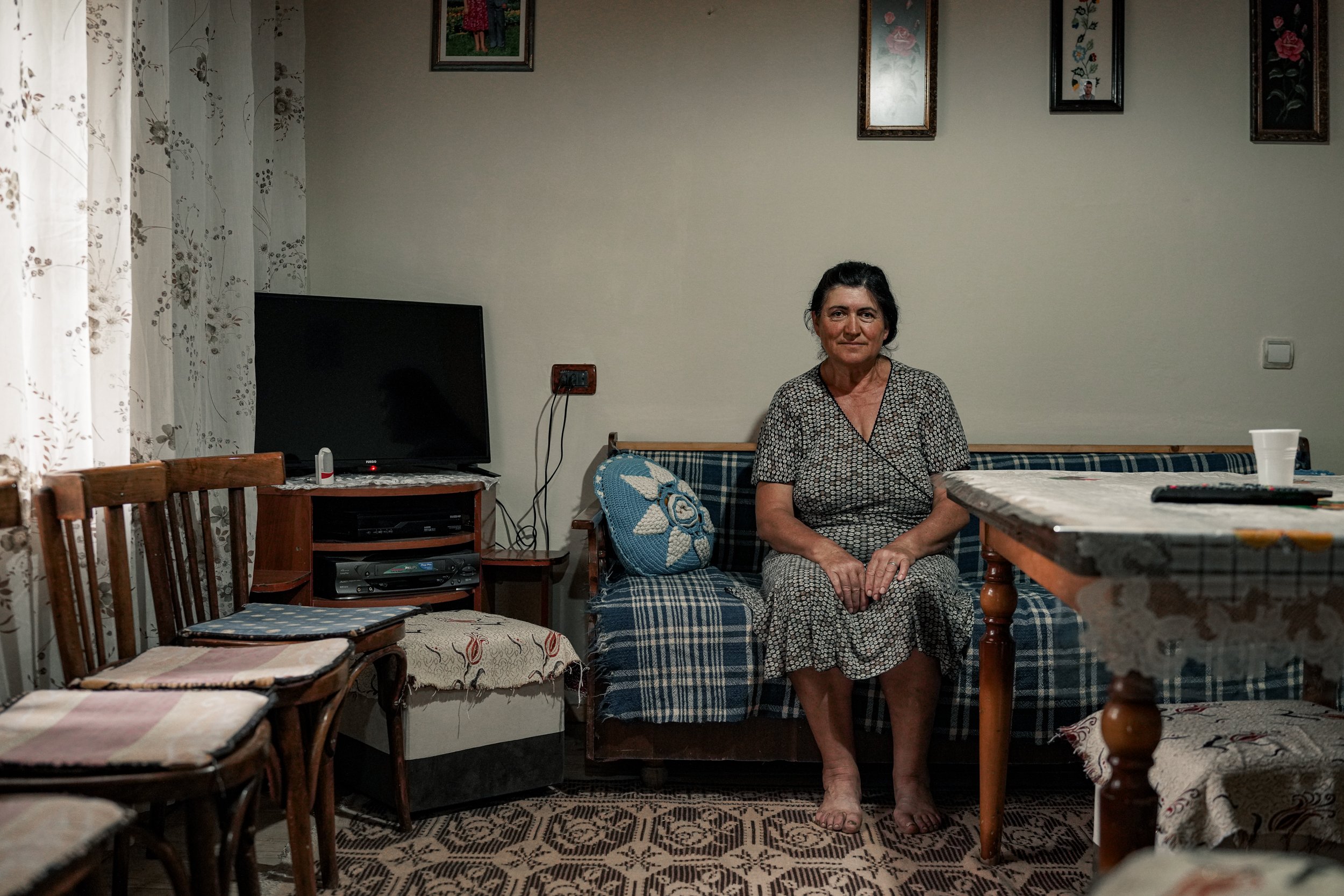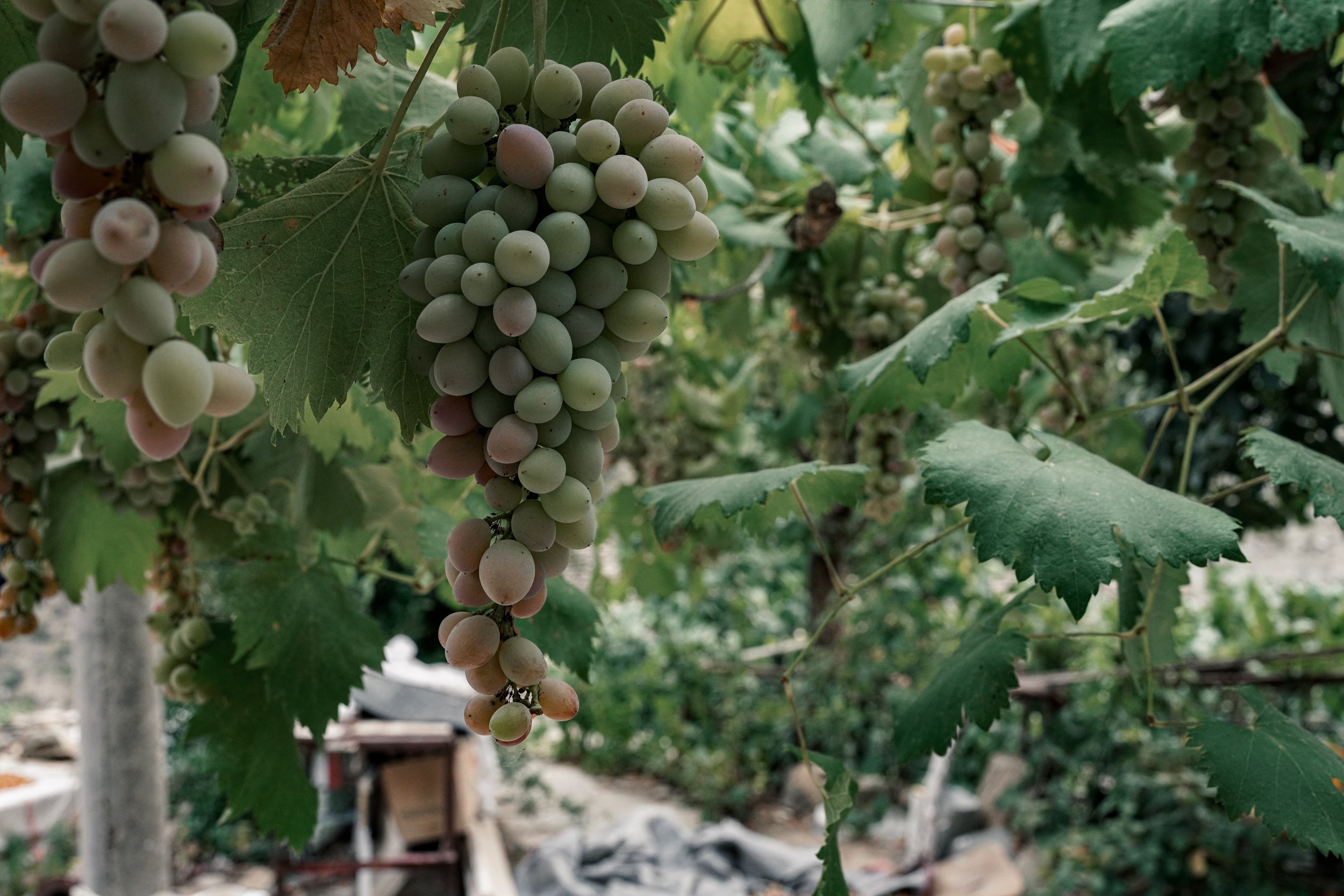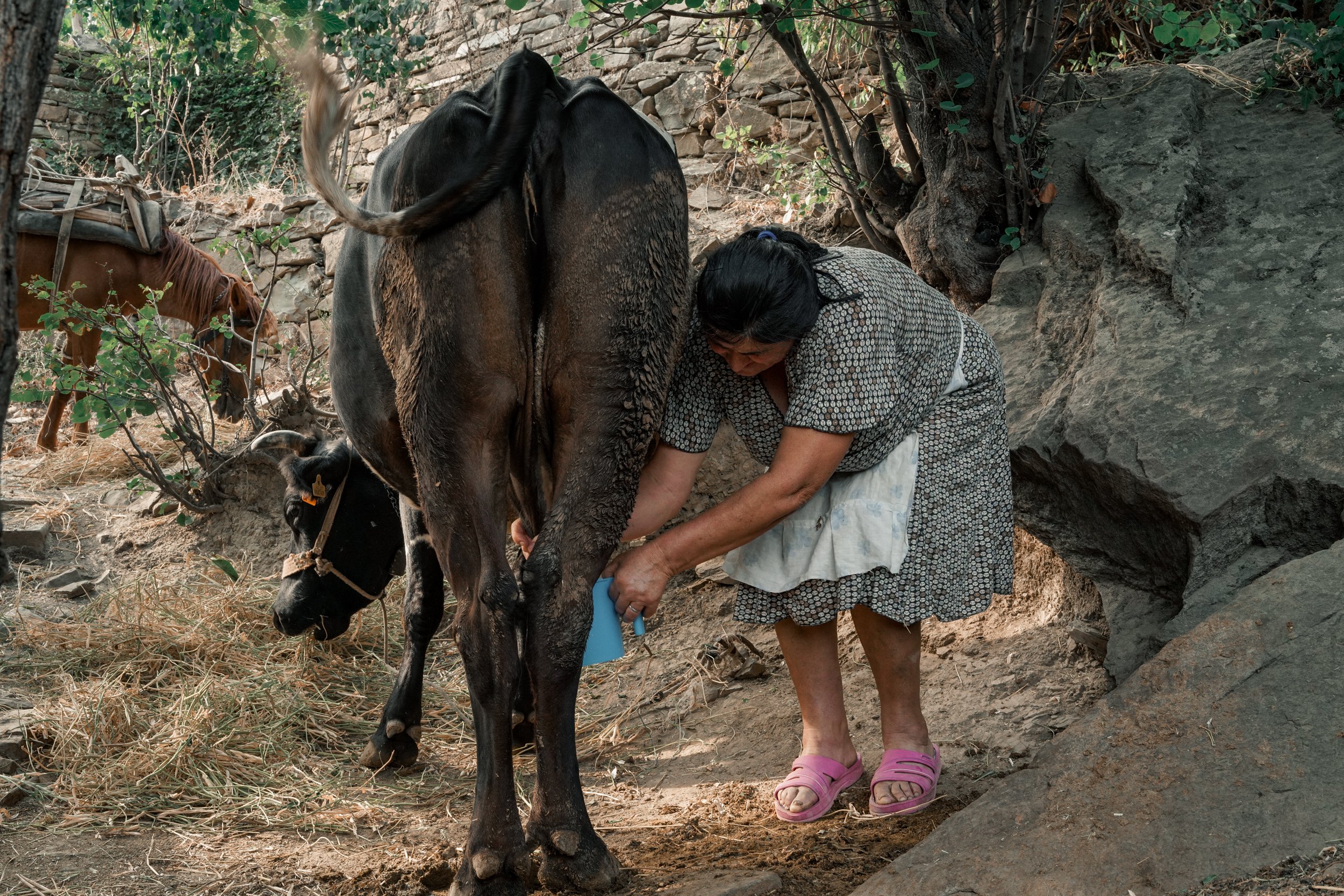Inside Albania’s Remote Villages: Benjë-Novocelë
A story from our time filming with the TV crew for Europe Hidden Hot Springs Journey.
A place we’d always wanted to visit was the village of Benjë-Novocelë, which lingered tauntingly at the end of a dirt track road we’d passed often but never explored. Hidden away in the mountains where all but a few buildings were shrouded from the view of its nearby namesake, we’d never once dared to take our van up that track and see what lay at the end.
For good reason, we would learn.
Our reason for deciding to visit now was an encounter the previous day with the honey man at Llixhat e Benjës, who journeyed down every day with his family in his truck to sell homemade honey, hand-picked mountain herbs and homebrew raki from a nearby village we ascertained to be Benjë-Novocelë. Our producer had wanted to film traditional Albanian village life as we’d done in our YouTube videos, and this seemed like a perfect addition to the storyline.
The road to the village was bumpy, rocky, steep and hellish, pitted with potholes and fiendishly narrow and windy. Our plucky LDV made it precisely halfway up that road before we were forced to abandoned it and walk* the rest of the way. When we arrived at the top of the hill we were amazed to find a 1970’s Mercedes saloon sitting proudly outside the church, its tyres flat and bumper ploughed into the dirt behind; amazed, but not surprised- it was Albania, after all.
*What actually happened was that we walked around the corner, took a 4x4 to the top then pretended to be out of breath for the cameras. The wonders of editing, eh?
We were told to ring the church bell, which acted as the “doorbell” to the village. We declined as we felt this wasn’t our usual style of encounters, and instead chose to wander through the steep village streets and see who we could meet.
The buildings were tall, hewn from stone and slightly crumbling; many were abandoned, even some three-storeys high, while others were used as chicken coops or pig pens. A cacophony of animal noises provided the background as we wandered around the paths and peered into gateways. We could hear life, but we could see none. A lady appeared at one point only to quickly disappear into her yard, and did not come back despite the cameraman’s cringingly loud cries of, “Hello? Excuse me! EXCUSE ME!”.
Eventually we met a man with his son who told us there were approximately 60 people living in the village. A surprising number, considering how difficult it was to access. Yet this didn’t stop the villagers venturing out daily to work, or to deliver their children to school.
It didn’t take long after that before we were met by a kind woman who saw us and instantly jumped out of her chair to invite us into her home. We entered without hesitation, believing the fixer or producer had arranged the encounter, but we would later learn that they also thought the same of us. It turned out that no one had arranged the meeting, and that Albanian people really were so hospitable as to invite six total strangers wielding camera equipment in for coffee without a moment’s hesitation. Gosh, how we loved this country.
Our host’s name was Marietta, and she greeted us with a tray of raki and sweets, showed us around her homestead and then prepared a delicious meal of fresh salad with white cheese, melon, figs, and our favourite Albanian dish, byrek. She showed us the caj flowers she grew, the bottles of raki and oil she kept in her spare bedroom (which she had begun to let out to intrepid visitors), the tomatoes gently sun-drying outdoors and her balcony full of hazelnuts.
Between her and her 90 year old grandmother who was sat under the shade of a tree shelling hazelnuts, they grew all the food they could ever need on their land, and never wanted for anything from the supermarket. They could pluck figs from the trees and eat grapes straight from their vines; they milked their cow and baked fresh bread every day, drank water from a spring, and they were able to subsist year-round entirely on their own produce. We were inspired.
Of course, with this story, as with every filming scene, there’s two versions of events.
There’s the one that aired on TV, where everything went perfectly and we were all smiles for the camera. Then there’s the version behind the cameras, which involved a lot of awkwardness, waiting around and asking our host to bring out a tray of raki for us multiple times for the right video shot. She was requested to make a lunch for us which we felt pretty bad eating on camera while the hungry film crew watched, and offering to pay someone for their hospitality in Albania is considered ruder than not which only added to our conflict. We preferred to only accept what our host was offering, and to reciprocate with gifts of our own where possible. The idea of requesting a meal be prepared was abhorrent to us. (Note: we did bring some Cornish Rattler ciders which were enjoyed with lunch. We wonder if Healey’s will ever see the footage of a 90 year old Albanian lady in the mountains knocking back some good old cyder.)
Moreover, the crew insisted Marietta and her stepmother join us at the table, which the elder lady was ashamed to do wearing her dirty work clothes and without the man of the family present. Traditional Albanian values continued to intrigue and inspire us, from the law of kanun that made it imperative to honour one’s guest, to the roles of men and women within the family, which were not so patriarchal as you might expect from a country with such traditional values. It was this fascination that kept us returning to Albania for a third, fourth and fifth time. But who’s counting anymore?
Marietta was ever-obliging, and her smile never faltered, even as the crew asked her to prepare bread outdoors by the fire (“Well we don’t usually make bread outdoors!”) and explain the lengthy process of making byrek. We were each offered a go at milking her cow but could not muster the strength Marietta had in her hands. Therein began one of the most hilarious stories of our time filming, which never fails to make me laugh, much to Ben’s chagrin.
I was more than happy to milk the cow; Ben point blank refused. Yet somehow in the kerfuffle of filming Ben was pressured into doing so after I had failed. Reluctantly he took an udder in his hand and squeezed, and squeezed almost as hard as he could when the milk didn’t come out, until suddenly several drops of blood landed on his hand. He recoiled in disgust, but I laughed and laughed until my sides ached; he hadn’t even wanted to milk the bloody cow in the first place! “You squeezed too hard and burst the cow!” I laughed.
Marietta was unphased about her bleeding cow, and wiped off the red before continuing to squeeze milk into a jug, putting us all to shame. Ben had conveniently disappeared when the time came to taste the fresh warm milk, something I’d enjoyed as a child growing up in Normandie, the French region of cows.
But the thing I enjoyed most about the whole experience was simply sitting down to help Marietta’s 90 year old grandmother shell the kilos of hazelnuts that were spread out in front of her. This immediately brought an expression of delight to her face, and she continued to pat me on the leg and say kind things to me in Albanian which I couldn’t understand without the fixer present. I just smiled and passed her more nuts.
Later I asked if I could take her portrait, this formidable-looking yet kind-hearted lady with the most incredible character I’d ever seen in one face.
“Of course,” she replied, translated by our fixer, “You are like my daughter.”
We ended up taking no less than five hours of Marietta’s time, but she seemed to enjoy every minute we were there, despite our insistences to the crew that she probably had work to be getting on with and that we ought to leave her in peace.
Nevertheless it was an enlightening experience, the very embodiment of everything we love about the Albanian people, and we were invited to return and stay with them to learn everything they could teach us about off-grid living. The sheer amount of people in this country living in villages autonomously, with no infrastructure or need for capitalism, was ming-boggling, but it was a way of life that resonated deeply with us and our aspirations for the future.
I didn’t get this lady’s name, but she saved me from getting mauled by a stray dog while I tried to photograph the mule, then took its reins and posed for this incredible photo.



























An abandoned village in northern Portugal houses hot springs, history and a curious hermit named Jorge…